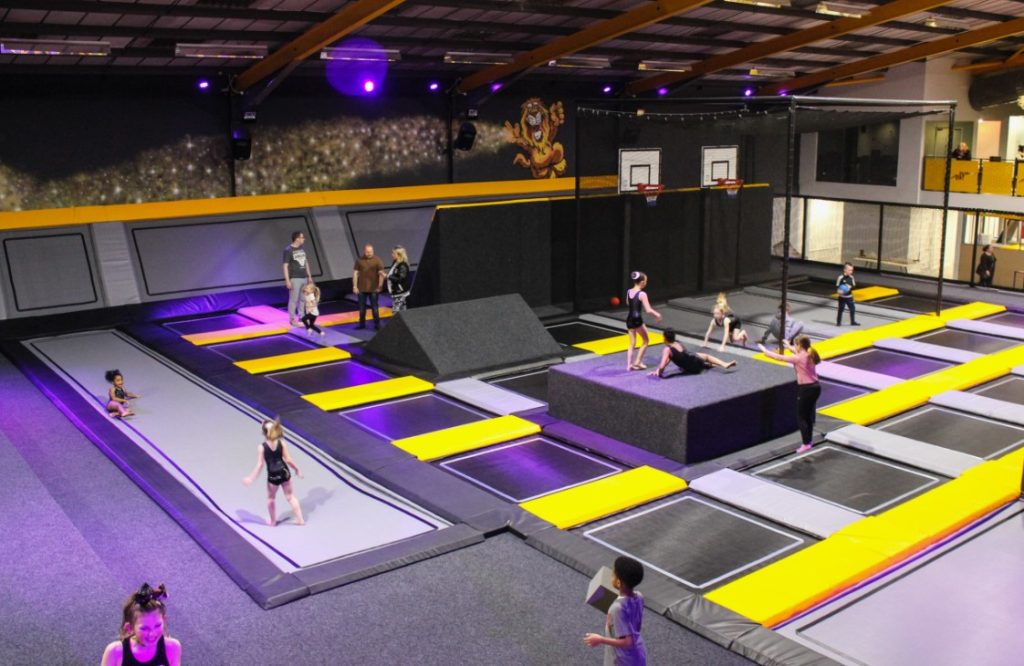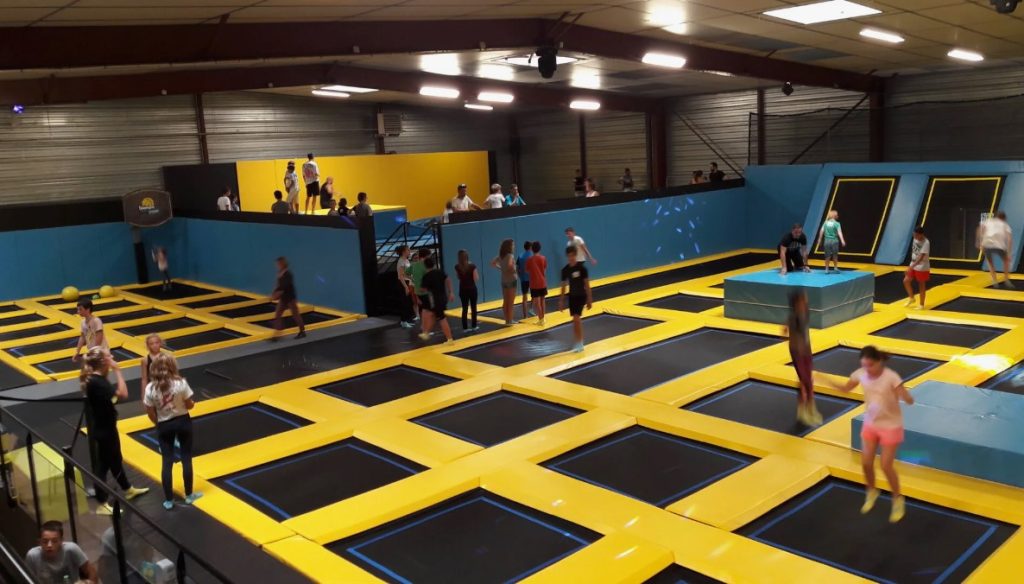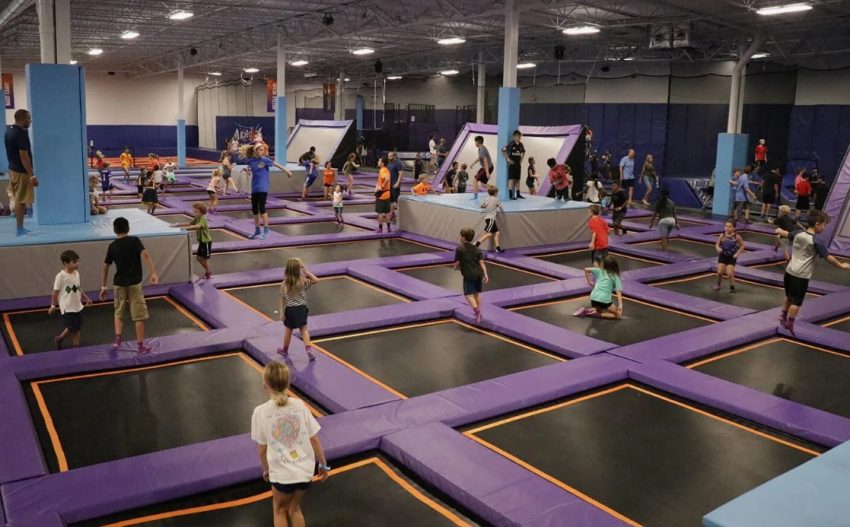Urban areas face constant challenges in providing recreational activities that cater to diverse populations while also driving economic growth. Trampoline parks have emerged as a popular solution, offering a range of benefits that extend beyond entertainment. This article explores the economic impact of trampoline parks in urban settings, with a specific focus on Dubai and the UAE region. We will delve into various aspects, including job creation, tourism, urban development, and community benefits, providing a comprehensive understanding of how trampoline parks contribute to urban economies.
Job Creation and Employment
Direct Employment Opportunities
Trampoline parks generate a significant number of direct employment opportunities. These facilities require a variety of staff, including management, customer service representatives, safety monitors, maintenance workers, and event coordinators. According to a report by IBISWorld, the indoor sports facilities industry, which includes trampoline parks, employs thousands of individuals worldwide. In Dubai, the presence of trampoline parks such as Trampo Xtreme has contributed to local employment, offering jobs to both skilled and unskilled workers.
Indirect Employment
The establishment of trampoline parks also leads to indirect employment opportunities. These parks often partner with local suppliers for equipment, food, and other services, creating a ripple effect throughout the local economy. Additionally, the construction and maintenance of these facilities provide jobs for contractors, electricians, plumbers, and other tradespeople.

Seasonal and Part-Time Work
Trampoline parks offer flexible employment options, including seasonal and part-time positions. This flexibility is beneficial for students, part-time workers, and individuals seeking supplementary income. The availability of such jobs helps reduce unemployment rates in urban areas and provides a stable income source for many residents.
Boost to Local Businesses
Increased Foot Traffic
Trampoline parks attract a steady stream of visitors, which in turn increases foot traffic to nearby businesses. Restaurants, cafes, retail stores, and entertainment venues benefit from the influx of visitors who often explore surrounding areas before or after their visit to the trampoline park. This boost in foot traffic can lead to higher sales and revenue for local businesses.
Partnerships and Collaborations
Trampoline parks often collaborate with local businesses for various services, including catering, event planning, and promotional activities. These partnerships create a symbiotic relationship where both parties benefit economically. For example, local catering companies may provide food for birthday parties and corporate events held at trampoline parks, leading to increased business and revenue.
Tourism and Hospitality
Attraction for Tourists
Trampoline parks have become a significant attraction for tourists, especially in family-friendly destinations like Dubai. These parks offer a unique recreational option that appeals to visitors of all ages. As tourists seek diverse experiences, trampoline parks add value to the tourism sector by providing an engaging and enjoyable activity. This attraction can lead to increased tourism revenue for the city.

Hospitality Industry Benefits
The presence of popular trampoline parks can boost the hospitality industry. Hotels, resorts, and vacation rentals near these parks often experience higher occupancy rates as families and groups travel to visit these attractions. Additionally, trampoline parks may partner with local hotels to offer package deals, further promoting tourism and benefiting the hospitality sector.
Urban Development and Infrastructure
Revitalization of Underutilized Spaces
Trampoline parks can play a crucial role in urban development by revitalizing underutilized or abandoned spaces. These parks are often established in large, vacant buildings such as warehouses or industrial sites, transforming them into vibrant recreational hubs. This repurposing of space not only enhances the urban landscape but also makes efficient use of existing infrastructure.
Infrastructure Investment
The development of trampoline parks requires significant investment in infrastructure, including building renovations, safety installations, and utility upgrades. These investments contribute to the overall improvement of urban infrastructure, making the area more attractive for further development and investment. Improved infrastructure can also lead to increased property values in the vicinity of the trampoline park.
Community Benefits
Social and Health Benefits
Trampoline parks offer numerous social and health benefits to urban communities. They provide a safe and controlled environment for physical activity, promoting fitness and well-being among residents. Regular physical activity is essential for reducing the risk of chronic diseases such as obesity, diabetes, and cardiovascular conditions. Trampoline parks encourage active lifestyles, contributing to the overall health of the community.
Family and Community Engagement
Trampoline parks serve as community hubs where families and individuals can engage in recreational activities together. They provide a venue for social interaction, helping to build stronger community ties. Events such as birthday parties, corporate team-building activities, and community gatherings held at trampoline parks foster a sense of belonging and community spirit.
Educational and Skill-Building Opportunities
Some trampoline parks offer educational programs and skill-building activities, such as gymnastics classes, fitness training, and workshops. These programs provide valuable learning opportunities for children and adults alike, enhancing their physical and cognitive skills. The availability of such programs can enrich the community by offering diverse educational experiences.
Economic Resilience
Diversification of Recreational Options
Trampoline parks contribute to the diversification of recreational options in urban areas, making the local economy more resilient. By providing an alternative to traditional recreational activities, these parks attract a broader audience and reduce the risk of economic downturns in any single sector. Diversified recreational options can also attract new residents and businesses to the area, further strengthening the local economy.
Adaptability and Innovation
Trampoline parks demonstrate adaptability and innovation in their operations. Many parks have incorporated new technologies and trends, such as virtual reality experiences and interactive games, to enhance their offerings. This ability to innovate keeps the parks relevant and competitive, ensuring their continued success and contribution to the urban economy.
Challenges and Considerations
Regulatory Compliance
Trampoline parks must adhere to strict safety regulations and standards to ensure the well-being of their patrons. Compliance with these regulations can be challenging and may require significant investment in safety equipment and training. However, adherence to safety standards is crucial for maintaining the park’s reputation and attracting visitors.
Market Saturation
As trampoline parks become increasingly popular, there is a risk of market saturation in some urban areas. Too many parks in close proximity can lead to increased competition and reduced profitability for individual businesses. Careful market analysis and strategic planning are essential to avoid oversaturation and ensure sustainable growth.
Environmental Impact
The construction and operation of trampoline parks can have environmental implications, such as increased energy consumption and waste generation. Implementing sustainable practices, such as energy-efficient lighting, recycling programs, and eco-friendly materials, can mitigate these impacts. Trampoline parks that prioritize sustainability can attract environmentally conscious consumers and contribute to broader environmental goals.
Conclusion
Trampoline parks have a big effect on the economies of cities because they help create jobs, grow local businesses, bring in tourists, improve the quality of life in communities, and encourage urban development. These parks have become important assets in places like Dubai and across the UAE. They help the economy grow and make people’s lives better. Trampoline parks are very important to the urban economy because they offer a variety of fun activities and encourage people to get involved in their communities. As the number of people visiting these parks grows, they will need careful planning and environmentally friendly methods to get the most out of them and make sure they stay successful in the long run.

I specialize in administrative technologies and am responsible for training other employees to use advanced systems and applications, including accounting software, mass communication procedures and organizational applications
